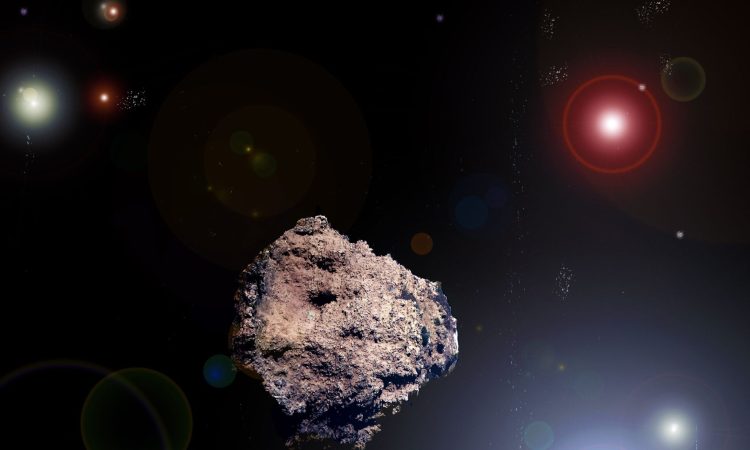
Samples from the asteroid Ryugu have again caused surprises, while at the same time calling into question previous ideas about the formation of carbon-rich asteroids.
In December 2020, the Hayabusa 2 spacecraft brought back samples from asteroid Ryugu to Earth. Since then, those few grams of material have been through quite a bit.
After the initial examinations in Japan, some of the small grains traveled to research centers around the world. There they were measured, weighed, chemically analyzed and exposed to, among other things, infrared, X-ray and synchrotron radiation.
At MPS, researchers examine the ratio of certain metal isotopes in samples, as in the present study.
Scientists refer to isotopes as variants of the same element that differ only in the number of neutrons in the nucleus.
Investigations of this type can help understand the place in the Solar System where
Ryugu’s Journey through the Solar System
Ryugu is a near-Earth asteroid: its orbit around the Sun intersects that of Earth (with no risk of collision). However, researchers hypothesize that, like other near-Earth asteroids, Ryugu is not originally from the inner Solar System, but traveled there from the asteroid belt located between the orbits of Mars and Jupiter.
The actual birthplaces of the asteroid belt population are probably even further from the Sun, outside the orbit of Jupiter.
Ryugu’s “family relations” may help clarify his origin and further development. How similar is Ryugu to known classes of meteorites? These are fragments of asteroids that have reached Earth from space. Investigations in recent years have yielded a surprise: Ryugu falls into the great crowd of carbon-rich meteorites, the carbonaceous chondrites, as expected.
However, detailed studies of its composition attribute it to a rare group: the so-called CI chondrites. These are also known as Ivuna-type chondrites, after the name of the locality in Tanzania where their best-known representative was found. Besides the Ivuna chondrite itself, only eight other exotic specimens of this type have been discovered to date.
Because their chemical composition is similar to that of the Sun, they are thought to be particularly virgin materials that formed at the outermost edge of the Solar System.
A missing ingredient
For the first time, the team investigated the nickel isotope ratios of four samples and six samples of carbonaceous chondrites.
The results confirm the close relationship between Ryugu and CI chondrites. However, the idea of a common birthplace at the edge of the solar system is no longer convincing.
Until now, researchers have understood carbonate chondrites as mixtures of three “ingredients” that can be seen even with the naked eye in cross-sections. Embedded in fine-grained rocks, round, millimeter-sized inclusions, as well as smaller, irregularly shaped inclusions, are densely packed together.
Irregular inclusions are the first materials to condense into solid clumps in the disk of hot gas that once orbited the Sun.
To date, researchers have attributed the differences in isotopic composition between CI chondrites and other groups of carbonate chondrites to different mixing ratios of these three ingredients. CI chondrites, for example, consist predominantly of fine-grained rock, while their siblings are significantly richer in inclusions. However, as the team describes in the current publication, the results of the nickel measurements do not fit into this scheme, they write.
What led to the birth of chondrites?
The researchers’ calculations now show that their measurements can only be explained by a fourth ingredient: tiny grains of iron-nickel, which must also have accumulated during asteroid formation. and CI chondrites, this process must have been particularly efficient.
According to the researchers, the first carbonaceous chondrites began to form about two million years after the formation of the Solar System. Pulled by the gravitational pull of the still-young Sun, dust and the first solid clumps made their way from the outer edge of the gas and dust disk to the interior of the Solar System, but encountered an obstacle on the way: the newly formed Jupiter.
Outside its orbit, the heavier and larger clumps in particular accumulated – and thus turned into carbonate chondrites with their many inclusions. Towards the end of this evolution, after about two million years, another process took over: under the influence of the Sun, the initial gas gradually evaporated outside Jupiter’s orbit, leading to the accumulation of mainly dust and iron-nickel grains. This led to the birth of CI chondrites.

